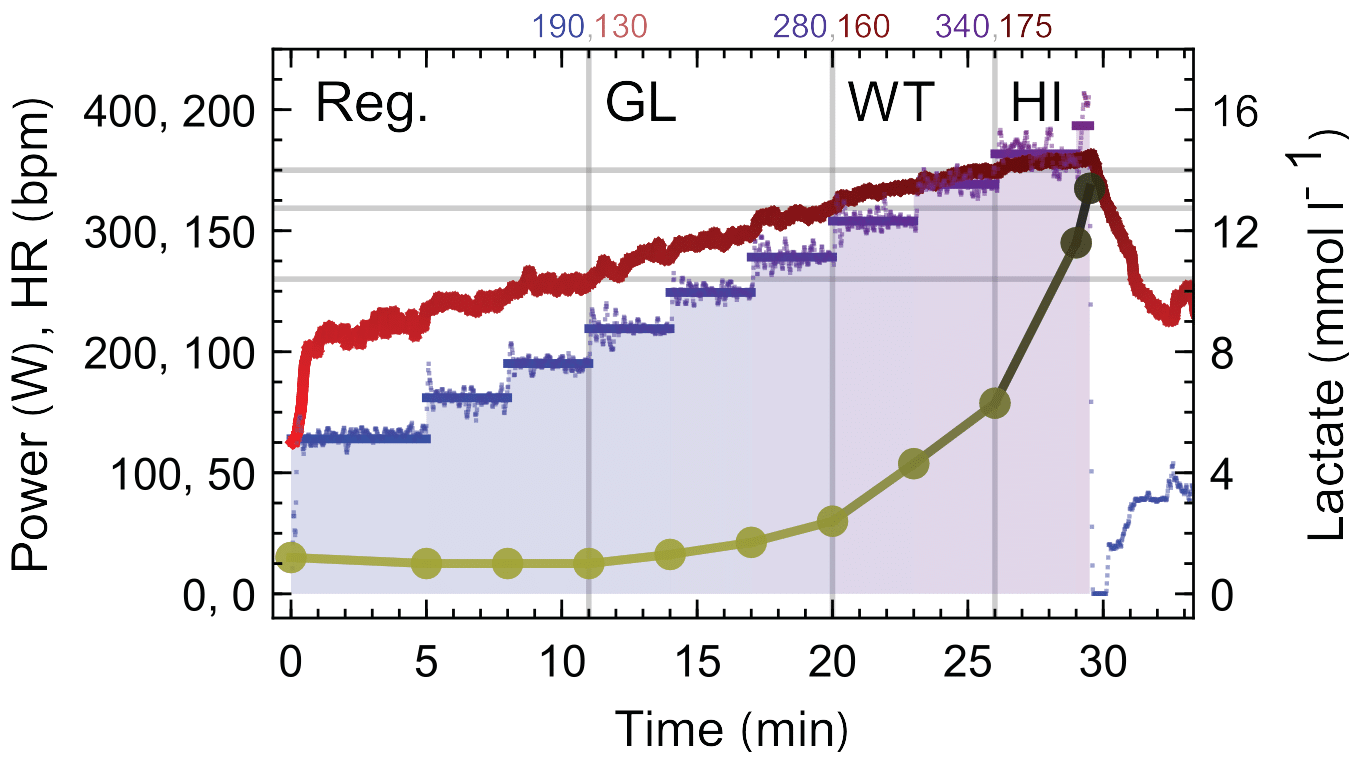Lactate test
Truth is, we should have been in Marbella, debuting season 2020 with a half-ironman. The virus you all heard about had other plans, and imposed unprecedented changes to everyday life. As long distance athletes, when something unexpected comes about, which is often the case, you deal with it the best way you can. Both Daniel and I are not too worried about pools being closed and not swimming for a while. We have years of swimming background, and a good feeling for the water should come back as soon as we put a focus on it again. At least that’s what I’m telling myself. I was really happy about my swimming shape in March. I am not panicking about the loss of swimming ability, such that I’d go in cold open waters for a quick training.
The cancellation (or very long postponing) of races meant one thing for sure: training had (and has) to be adapted in consequence. That was the first realization. As Switzerland was moving towards a lock-down, both Daniel and I decided to reduce the intensities on the running side. His Achilles and my right hamstring are still finicky, and putting them at risk for an unsure racing calendar makes absolutely no sense. Back to the drawing boards then. And if you can count to three, you’ll realize that one discipline remains: cycling. The quarantine provides an opportunity to work on our weakness. The problem is, it is hard to train and plan consistently when work, social life, and travel plans get rearranged in a very sudden manner. So after a few weeks of transition, I asked Jamie about assessing my current level of bike fitness, such that we could put a well-designed focus on improving this aspect in the next months.

Lockdown = more time indoor.
She offered to perform a lactate test to find my endurance and sweet spot zones, where training of aerobic and anaerobic capabilities can be targeted. The protocol is relatively simple: after 5 min of warm-up at 130 W, every 3 min we go up by a step of 30 W, and measure blood lactate concentration together with heart rate. The night before, I predict that lactate will start increasing at 180 W, where I typically notice a slight increase in my feeling of difficulty, and diverge not far above my ironman tempo (250 W), but that on short steps I can keep up to 400 W, or half an hour of testing.
The result? https://3record.de/u2/activity/view/48035/lactate, also represented in brief in the picture below.

When was the last time you saw a PRO lactate test openly public
 ? (Reg.=Regenerative, GL=GrundLage - endurance, WT=WettkampfTempo - competition tempo, HI=hohe Intensität - high intensity).
? (Reg.=Regenerative, GL=GrundLage - endurance, WT=WettkampfTempo - competition tempo, HI=hohe Intensität - high intensity).At rest, my lactate was at about 1.2 mmol/l. The absolute value is not so important, but rather that it later went down as I started exercising in my regenerative zone. The first 10 minutes of the test are very easy, and nothing substantial is happening. Heart rate steadily increasing, but no other physiological sign. At 190 W, 130 bpm, Jamie notices my respiration rate going slightly up, and sweat starts pearling on my skin. Clear indications that I am entering the endurance zone, which is confirmed by the lactate showing more concentration in the blood sample (I don’t see lactate results during, but could have predicted that step).
In the next three steps of the protocol, lactate increases moderately. The heart rate response is a bit too slow to see the steps, but it keeps its steady progression. At 280 W, the rate of increase of lactate suddenly cranks up. Slightly below that value will be my sweet spot training, with the aim of pushing that barrier up with every minute spent close to it. I enter the competition zone, where distance up to half ironman are performed. Burning sensation in the legs, but with grit, one can hold it for up to a few hours. Above 340 W, my lactate is diverging, heart rate slowly saturating, legs begging to stop the test. I cannot hold the prescribed pace for the 400 W step, but with a final lactate concentration of 13.4 mmol/l I certainly gave it all I had on that day.
Painful, but insightful and quickly over.
In the week that followed, I also performed an FTP test (on not-very-recovered legs, but still gave it my best) in the same conditions (indoor, no fan, on the bars). I wanted to aim at holding 340 W for 20 min, but that turned out too much, and I – slightly disappointed – averaged 320 W, see https://3record.de/u2/activity/view/48206/ftptest. This corresponds to a ‘trainer-FTP’ of 304 W, and sweet spot range of 88-93%, 267-283 W. Actually all consistent with the lactate test. I just had in mind tests previously performed on an outside climb, with a road bike, giving a tad more than 10% extra FTP.
In the weeks that are coming, lots of training will aim at improving the base by riding around 190 W, the first threshold found in the test. Some with no/little sugar, some longer, a little variety is always good. Once a week a sweet spot session is planned, where relatively long (6-30 min) repeats at this somewhat comfortable but hard to hold pace progressively improves your ability to go hard for long. The other key session every week goes high up in the zones, with short burst in the high intensity zones to keep the legs fired up properly.
I don’t know yet which race will put this new knowledge and structured training to test, but stay tuned for faster bike legs! (Feel free to get in touch also if you have insights to provide based on the linked data.)



